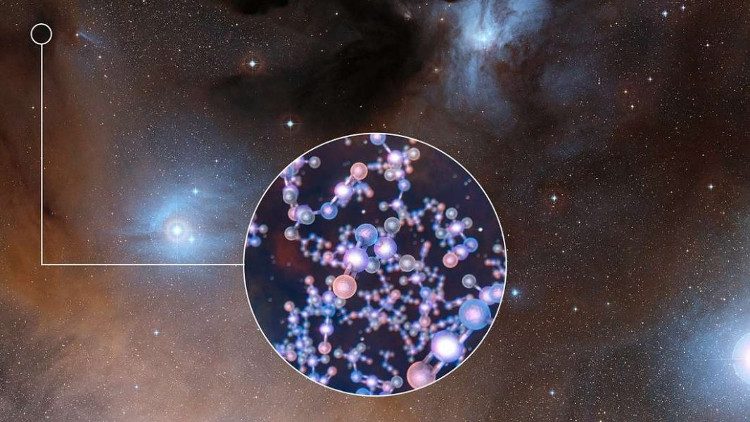The raw material of life is 400 light years from Earth
The molecule methyl isocyanate, the material that forms life, was discovered around a young star 400 light-years from Earth.
Two independent research groups using the Atacama Large Millimeter / submillimeter Array (ALMA) telescope system in Chile discovered methyl isocyanate molecule when measuring the spectrum of the system including many very young protostars named IRAS 16293-2422 , 400 light years from Earth, IFL Science reported on June 8.
The methyl isocyanate molecule is located in the dense area on the inside of the dust and gas belt surrounding the stars. These belts are the place of protostar formation as well as components of a solar system like planets and comets.

Traces of methyl isocyanate molecules are found around a star.(Photo: ESO).
"The discovery can give us a proof that life can be born in many places in the universe. The solar system may not be as special as we once thought," said Rafael Martín-Doménech at the Center. Cosmology in Spain, the head of a research group, said.
Methyl isocyanate is a particularly interesting molecule because it involves the creation of more complex molecules such as peptides, amino acids and proteins. Molecules of methyl isocyanate containing nitrogen, carbon and oxygen are bound together. These are the three most common types of atoms found in molecules in living organisms."Nitrogen, carbon and oxygen are very important to life," Martín-Doménech stressed.
The finding does not provide enough evidence to conclude that life can form in this star system, but research helps scientists understand the basic unit process of life created by the star itself. Store and transfer to the planet.
When life materials cannot survive through planet formation, they can be preserved in the ice cover of comets and comets moving to the edge of the system. There, they are safely stored before being pushed back inside, which can hit any planet there.
The researchers' next goal is to find amino acids in space. According to Martín-Doménech, they are looking for ricin, the simplest form of amino acid.
- Look at the darkest material on Earth
- It is possible to confirm life on three Earth-like planets over the next decade
- 'Earth 2.0' has perfect conditions for maintaining life
- New invisible material created by light
- The darkest material can swallow most of the light
- NASA claims Proxima b Earth-like planet b does not support life
- Scientists think that these are the eight most likely cases of life eradication
- Video: Lighting the Earth for 6 years from the ISS station
- Life on Earth will be destroyed after 3 billion years
- When did life on Earth really begin?
- Who will rule the Earth in the future?
- The super-Earth planet may contain life
 Van Allen's belt and evidence that the Apollo 11 mission to the Moon was myth
Van Allen's belt and evidence that the Apollo 11 mission to the Moon was myth The levels of civilization in the universe (Kardashev scale)
The levels of civilization in the universe (Kardashev scale) Today Mars, the sun and the Earth are aligned
Today Mars, the sun and the Earth are aligned The Amazon owner announced a secret plan to build a space base for thousands of people
The Amazon owner announced a secret plan to build a space base for thousands of people